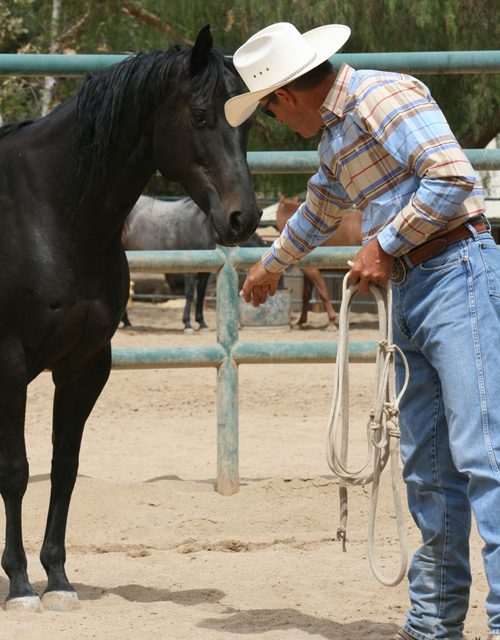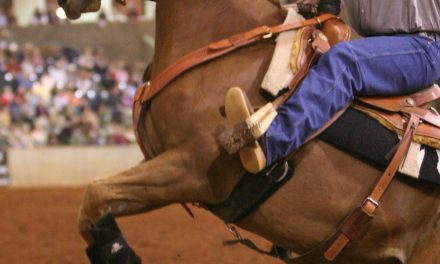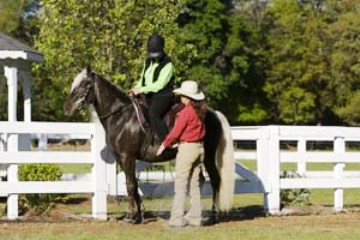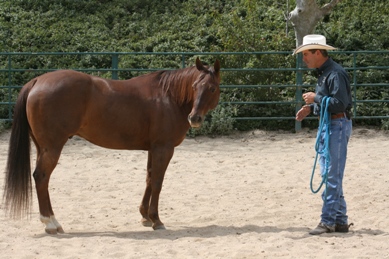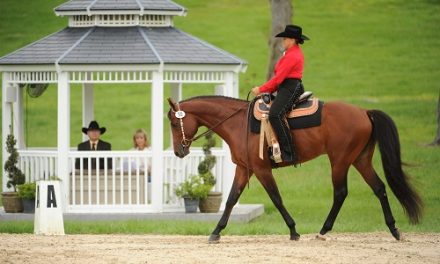 I define horseback riding and horsemanship as two separate categories. If you are simply a horseback rider, you’ve acquired a few basic skills that keep your mind in the middle and a leg on either side. Horseback riding is simply the act of not falling off. Almost anyone can be a horseback rider.
I define horseback riding and horsemanship as two separate categories. If you are simply a horseback rider, you’ve acquired a few basic skills that keep your mind in the middle and a leg on either side. Horseback riding is simply the act of not falling off. Almost anyone can be a horseback rider.
Horsemanship, on the other hand, is more of an elite club. If you are an aspiring horseman or woman, you’re now on a lifelong journey learning the thousand little things that make the big difference and will elevate you from horseback rider status to the ranks of true horsemanship.
Here is a very limited and incomplete list of little things that, by themselves, might not seem that important. However, when you put them together with 993 other things, they make the big difference.
1. Catch a spooky horse
Have your halter and lead rope organized in your hand before you approach the horse. A touchy colt might not hang around long enough for you to get things untangled and prepared.
2. Make your cinching up process a gradual two or three step procedure
Cinching too tight, too soon, at best can create a crabby horse with ears pinned back. At worst it will cause some horses to get cinch bound. This phenomenon will result in pulling back, falling down, flipping over, and a lot of other things you don’t want to happen.
3. Loosen up the reins
Often riders can be seen sitting casually on their horse with slight tension on the reins. When you have completed a maneuver, drill, or exercise, and you are standing still, make sure your reins are draped. Otherwise your horse will begin to pull on your hands to create slack and you’ll only stiffen and dull the feeling in your horse’s face.
4. Take time to hesitate
Sometimes when you’re doing nothing you really are doing something. After a stop, spin, negotiating an obstacle, or any other maneuver, stopping and waiting in those exact tracks is a great way for your horse to mentally digest what has just transpired. It also allows him to stay quiet and relaxed during a training session.
5. Allow you horse to cool down physically and mentally after a training session
When I was a young man, I worked for a horseman who had a very specific routine for his performance horses. He figured he had an hour to devote to each horse. He allotted 20 minutes for warming up, 20 minutes for serious training, and 20 minutes for cooling down. You don’t need to follow that exact regiment, but the underlying principle is important. You’re not riding a machine. Allowing your horse to relax and cool down after a workout will help keep his mind right and his attitude fresh.
6. Back your left foot almost all the way out of the stirrup before dismounting
I’ve observed countless riders step down and physically remove their left foot from the stirrup with their hand. If a horse spooks unexpectedly, the rider can be hung up and drug. Trust me, that’s no fun.
7. Keep your horse from getting gate and barn sour
At the end of a training session, ride your horse away from the gate, step off, loosen your cinch, and lead your horse back to the barn. It might not be the most convenient thing to do, but it will help with those horses that are always gravitating back toward the gate.
Only 993 more little things left to learn before becoming a part of the elite horsemanship club. These subtle, sometimes seemingly insignificant things can truly make a big difference in your horsemanship journey. I mention them because I watch scores of riders ignoring these concepts and thus hindering themselves from obtaining the next level of horsemanship. These are the types of things that separate the average horseback rider from the true horseman or woman. It’s the little things that make the big difference.
Do you have a little thing to add to our list? I’d love to hear it. Send your thoughts to: richard@wintersranch.com.
About the author
Richard Winters is a performance horse trainer with a natural horsemanship touch. For over 20 years, he has helped people with their horses through his training programs, clinics, DVDs, and his presentations at horse expos. His horsemanship is universal, ranging from reined cow horses on the Western side to jumping and dressage on the English side. Learn more about Richard at www.wintersranch.com.

